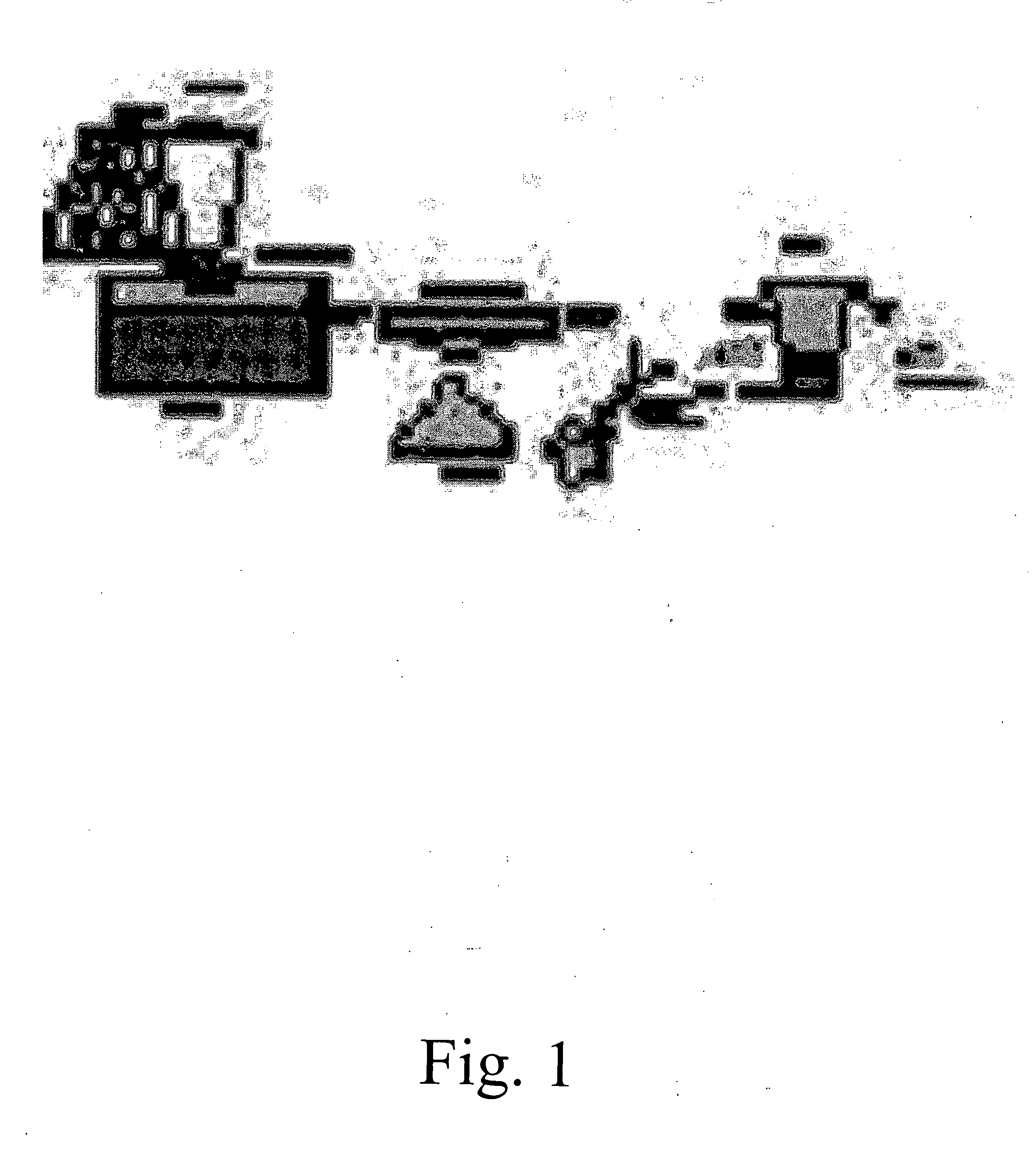Process for recovering rubber from rubber-bearing plants with a gristmill
a gristmill and rubber-bearing technology, applied in the direction of grain treatment, etc., can solve the problems of reducing the significance of the process, the impracticality of the process, and the inability to meet the needs of the plant,
- Summary
- Abstract
- Description
- Claims
- Application Information
AI Technical Summary
Benefits of technology
Problems solved by technology
Method used
Image
Examples
example 1
[0058]The following example illustrates the recovery of rubber from Scorzenera tau-saghyz with a gristmill. The roots of Scorzonera tau-saghyz were harvested from the wild fields in the eastern mountains of Uzbekistan and Kazakhstan. The roots of Taraxacum kok-saghyz were harvested from the test plots in Jizzax, Uzbekistan.
[0059]The nip opening of the top runner stone of a gristmill were enlarged to 15 cm in width and 5 cm in depth to accommodate the pieces of roots in the form of a hemi-cone on both sides of the upper rotating stone.
[0060]The roots were air-dried at room temperature for 30 days and moisture content was 7.5% by weight. 20 kg of dried tau-saghyz roots were chopped at 5-15 cm in length (the whole roots were used with kok-saghyz) and fed into a gristmill via hopper with the runner stone rotating at 1000 RPM. The weight of the upper rotating stone was about 600 kg.
[0061]The resulting rubber threads and ground biomass were separated using a vibrating dry mesh screen (mes...
example 2
[0063]The following example illustrates the purification of rubber in the presence of soap. The rubber threads, (17 g) from Example 1, were placed into the Stirrer and added to 500 ml of warm water (50 C). A small amount of liquid soap (Dove: Fresh Touch), prepared from 1 gram of soap and dissolved in 10 ml of water, was also added. The pH of the soap was pH=7 to avoid an alkali medium.
[0064]The Stirrer was run at 35,000 RPM for 2 min. then the mixture was allowed to settle for 5 minutes. The separated plant tissue debris precipitated and the rubber threads floated to the surface during settlement. The floated rubber threads were skimmed off. The water was decanted without disturbing the plant tissue debris in the bottom for the use during subsequent stirrings. The remaining plant tissue was dried and the weight was determined. This procedure was repeated 4 more times to obtain 99.8% pure rubber threads at different stirring periods.
[0065]The results are given in Table 2.
TABLE 2Puri...
example 3
[0066]The process of Example 2 was modified so that the metal rod in the Stirrer was inserted upside down. The temperature of the water with the rubber threads was kept between 40° and 50° C. with a waterbath, while the stirring was carried out at 10,000 RPM for 5 hours.
PUM
| Property | Measurement | Unit |
|---|---|---|
| temperature | aaaaa | aaaaa |
| length | aaaaa | aaaaa |
| length | aaaaa | aaaaa |
Abstract
Description
Claims
Application Information
 Login to View More
Login to View More - R&D
- Intellectual Property
- Life Sciences
- Materials
- Tech Scout
- Unparalleled Data Quality
- Higher Quality Content
- 60% Fewer Hallucinations
Browse by: Latest US Patents, China's latest patents, Technical Efficacy Thesaurus, Application Domain, Technology Topic, Popular Technical Reports.
© 2025 PatSnap. All rights reserved.Legal|Privacy policy|Modern Slavery Act Transparency Statement|Sitemap|About US| Contact US: help@patsnap.com

